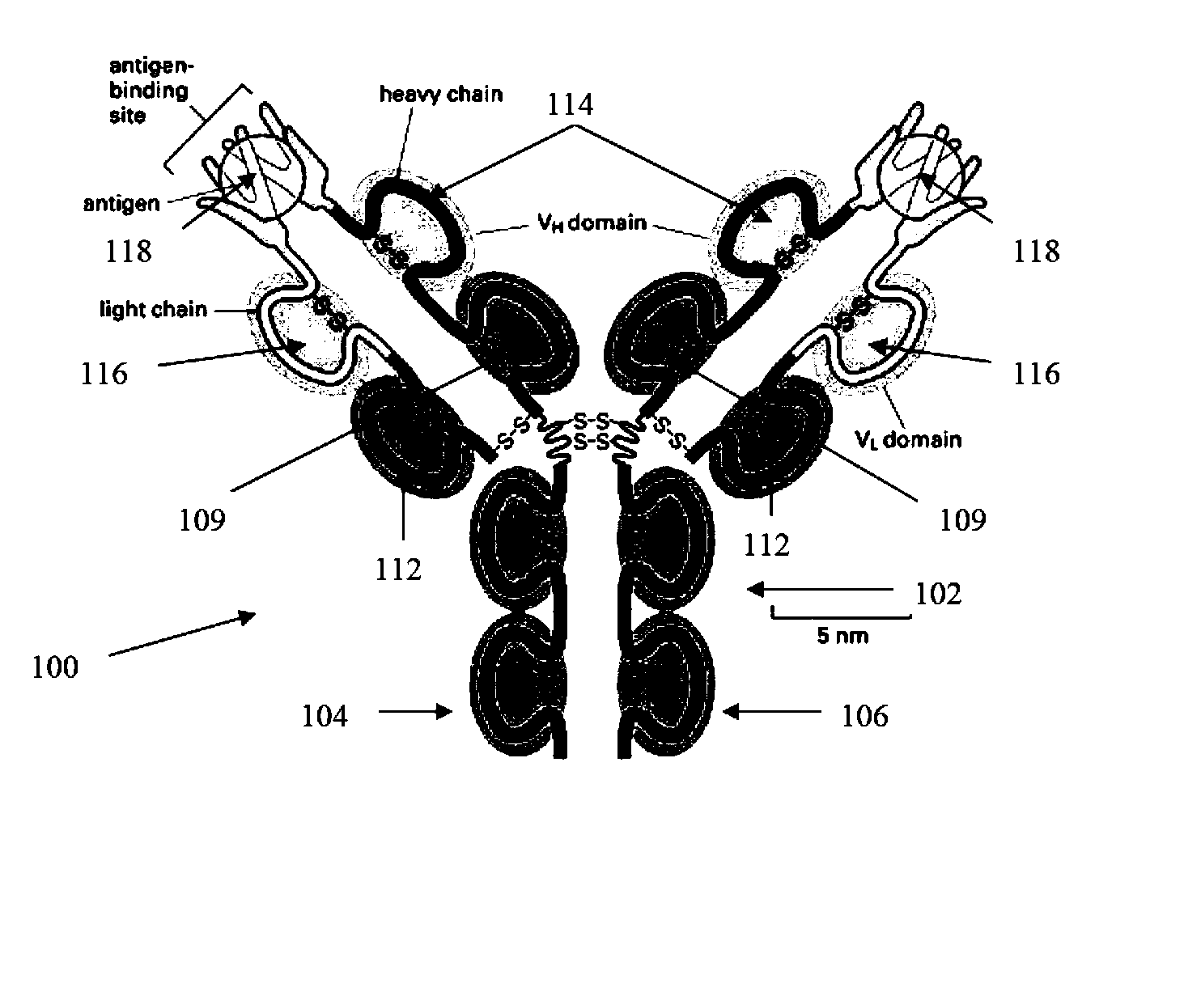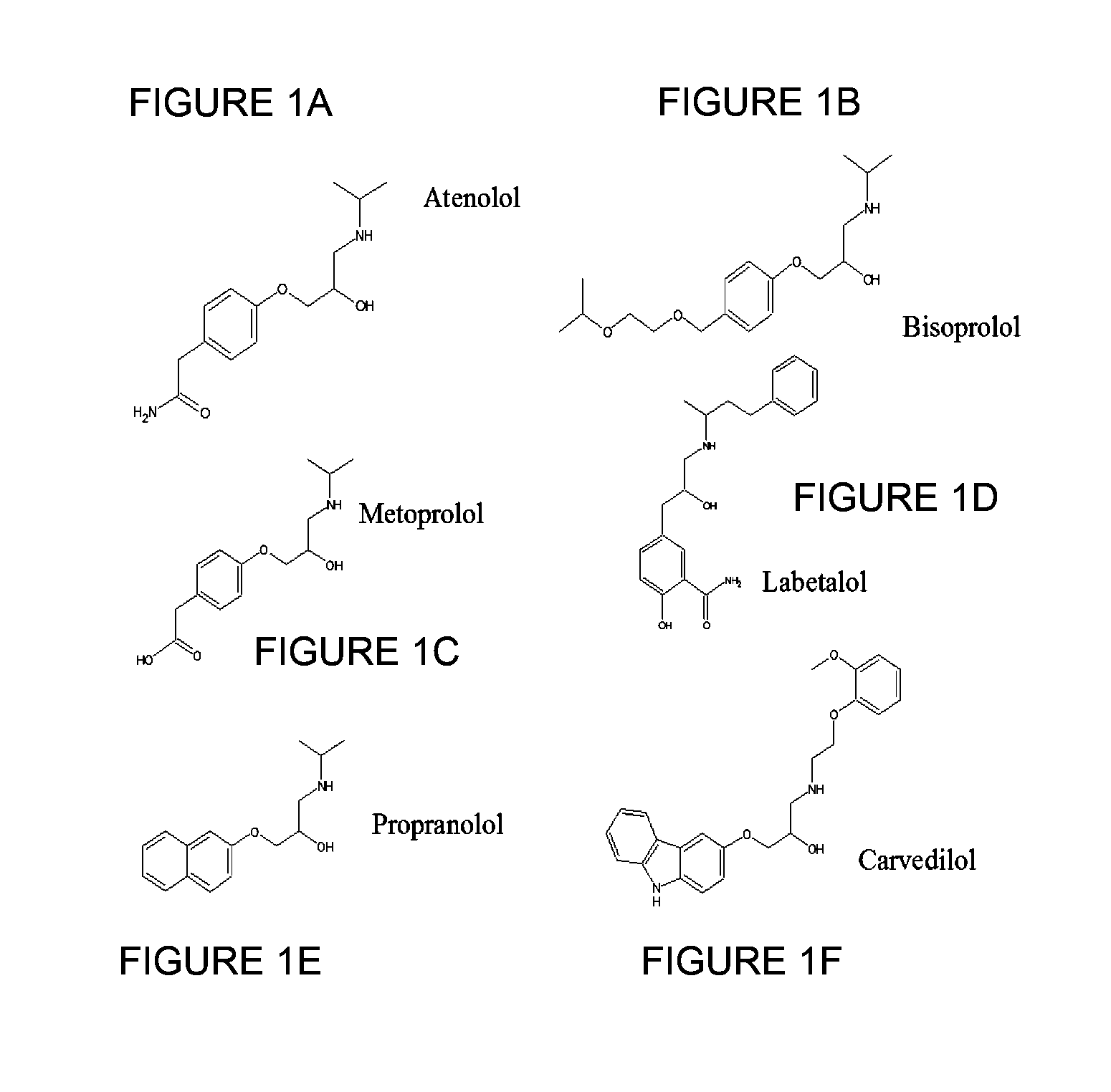Methods and compositions of targeted drug development
a drug and composition technology, applied in the field of new chemical entities, can solve the problems of greater structure, less probability of assay, and less probability of rational molecular design
- Summary
- Abstract
- Description
- Claims
- Application Information
AI Technical Summary
Benefits of technology
Problems solved by technology
Method used
Image
Examples
example 1
Vascular Endothelial Growth Factor
[0224] The following example is directed toward the generation of one or more pharmacophores based at least in part upon antibodies raised against a target molecule, in this example human vascular endothelial growth factor (VEGF-A) (SEQ ID NO: 2). In short, a human vascular endothelial growth factor (VEGF-A) is presented to a number of animals (for example a group of genetically dissimilar mice). The inoculation and repeated presentation of the VEGF-A results in the animals raising a variety of IgG antibodies (polyclonal high affinity antibodies), against the molecule. These antibodies differ across the animals as each has a distinct genetic potential for antibody production (different combinations of possible CDRs). The variation in the antibodies results in them binding to the VEGF-A molecule at different surface areas of the molecule. It is expected that at least one of the antibodies binds to the active region of the VEGF-A molecule.
[0225] By ...
example 2
Influenza Glycoprotein
[0240] Another desirable target might be a protein associated with a viral infection, for example the hemagglutinin. Hemagglutinin is an antigenic glycoprotein found on the surface of the influenza viruses and is responsible for binding the virus to the cell that is being infected.
[0241] Millions of people in the United States (some estimates range as high as 10% to 20% of U.S. residents) are infected with influenza each year, despite an aggressive media campaign by vaccine manufacturers, medical associations, and government organizations concerned with public health. Most people who get influenza will recover in one to two weeks, but others will develop life-threatening complications (such as pneumonia). While typically considered by many to be simply a bad version of a cold, influenza can be deadly, especially for the weak, old or chronically ill. An average of about 36,000 people per year in the United States die from influenza, and 114,000 per year are ad...
example 3
[0251] Angiogenesis (sprouting of new capillary vessels from pre-existing vasculature) is a critical aspect of development in the fetus and in children, as their circulatory system expands during growth. In adults angiogenesis is required during the normal tissue repair, and for the remodeling of the female reproductive organs (ovulation and placental development). Certain pathological conditions, however, such as tumor growth and diabetic retinopathy, also require angiogenesis. A known factor involved in angiogenesis is angiogenin, which is a single polypeptide chain of 123 amino acids.
[0252] Angiogenin is one of the normal cytokines that is commandeered by cancer to assist in its rapid growth. In this case, tumor cells secrete angiogenin in order to recruit greater blood flow to the tumor. It would, therefore, be of great value to find a drug that could inhibit the production of, or the activity of angiogenin.
[0253] Chavali, et al., have published the results of their...
PUM
| Property | Measurement | Unit |
|---|---|---|
| weight | aaaaa | aaaaa |
| width | aaaaa | aaaaa |
| radius | aaaaa | aaaaa |
Abstract
Description
Claims
Application Information
 Login to View More
Login to View More - R&D
- Intellectual Property
- Life Sciences
- Materials
- Tech Scout
- Unparalleled Data Quality
- Higher Quality Content
- 60% Fewer Hallucinations
Browse by: Latest US Patents, China's latest patents, Technical Efficacy Thesaurus, Application Domain, Technology Topic, Popular Technical Reports.
© 2025 PatSnap. All rights reserved.Legal|Privacy policy|Modern Slavery Act Transparency Statement|Sitemap|About US| Contact US: help@patsnap.com



